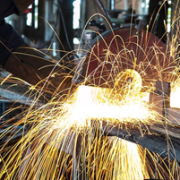Construction sites like highways or roadways are hazardous environments for people passing by in commuter vehicles or pedestrians. Multiple interactions occur between workers, vehicles, and moving construction equipment. Such dangerous situations can result in injuries and deaths.
San Antonio, Texas, undergoes excessive construction of infrastructure and roads. To prevent hazardous accidents, construction workers, equipment operators, and companies must encourage the use of work-zone equipment San Antonio, TX, to ensure the safety of lives.
So, what comprises the work-zone safety equipment? This article will give insights on the effective ways of utilizing the equipment.
Smart Work Zones and Safety Equipment
Smart work zone systems are designed to perform efficiently on roads regularly under construction or maintenance. In San Antonio, Texas, both construction workers and people constituting the traffic face fatal accidents during road or infrastructure construction.
In 2013, there were 828 total fatalities in construction. Such incidents are growing and are a leading cause of construction deaths among people. These fatalities can be prevented mainly by installing work zone equipment San Antonio, TX.
So, to understand this better, here is a list of safety equipment to use on construction sites.
Signages
The first step to a safe construction zone is installing proper signages, especially on highways. Signages that say “Work Area Ahead” can help drivers prepare for the approaching traffic.
Another work zone signage must focus on informing drivers about the speed limit. “Area Under Construction,” “Proceed with Caution,” or “Slow Down, Work Zone Ahead” are some signs that will be highly useful in delivering the point to the drivers.
Flaggers
One of the best methods to prevent work zone accidents is having a flagger. Flaggers are useful in monitoring traffic and keeping a smooth flow. When only a single lane is functional, the traffic needs to be funneled from two directions.
Flaggers must wear clothing or vests with high visibility that allows the worker to be visible to the driver for one-thousand feet or more. After the one-thousand-foot mark, signs should indicate a flagger ahead.
It is also beneficial to equip flaggers with STOP/SLOW signs. It will be beneficial if they have lights. This way, the drivers are more aware of traffic situations in a one-way traffic situation.
Lighting
Lighting is particularly useful to drivers during nighttime. Illuminations help bring attention to important messages. Equipment like flares and ground reflectors can be used along barricades to make their presence visible.
Illuminated towers or lighting towers instruct traffic to move in a particular direction or merge equally important. The Occupational Safety and Health Administration (OSHA) emphasizes five-foot candles for workers and operators working on foot.
Traffic control barriers
Equipment like cones, drums, orange barrels, or barricades should be used to mark a perimeter. Failure to install these could lead cars and other vehicles too close to the equipment or workers. Apart from using them outside the constriction zone, they should also be used inside the work zone, especially in dangerous areas.
Bigger projects may require you to install bigger barricades, and smaller ones can have cones. Ideally, there should not be more than a 20 feet gap between cones.
Final thoughts
Construction site managers or companies must encourage the use and installation of work zone equipment San Antonio, TX, to ensure the safety of workers, equipment operators, and the traffic.
Often, work zone accidents happen because of inadequate warnings available to drivers. This is why equipment is crucial in the work area and even the quarter-mile before the site.













Comments